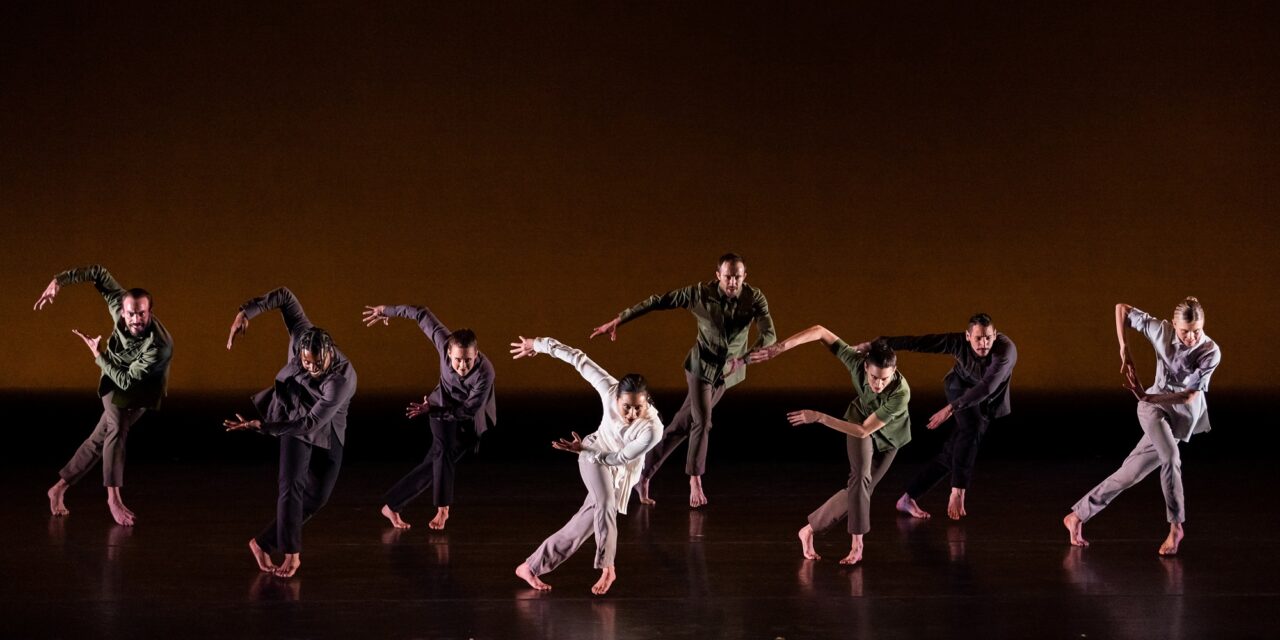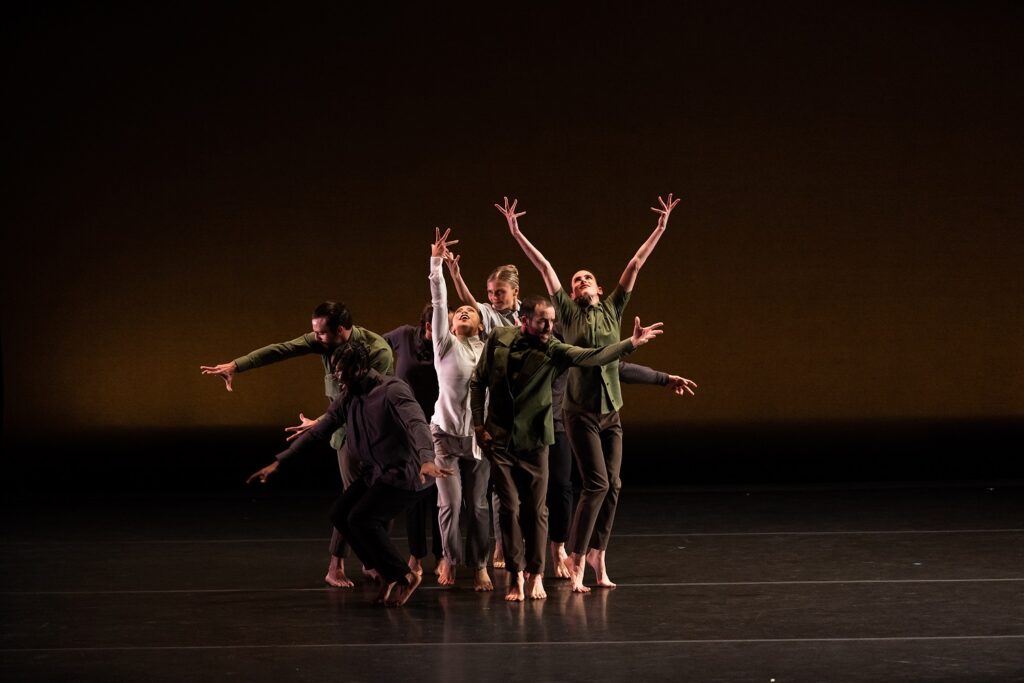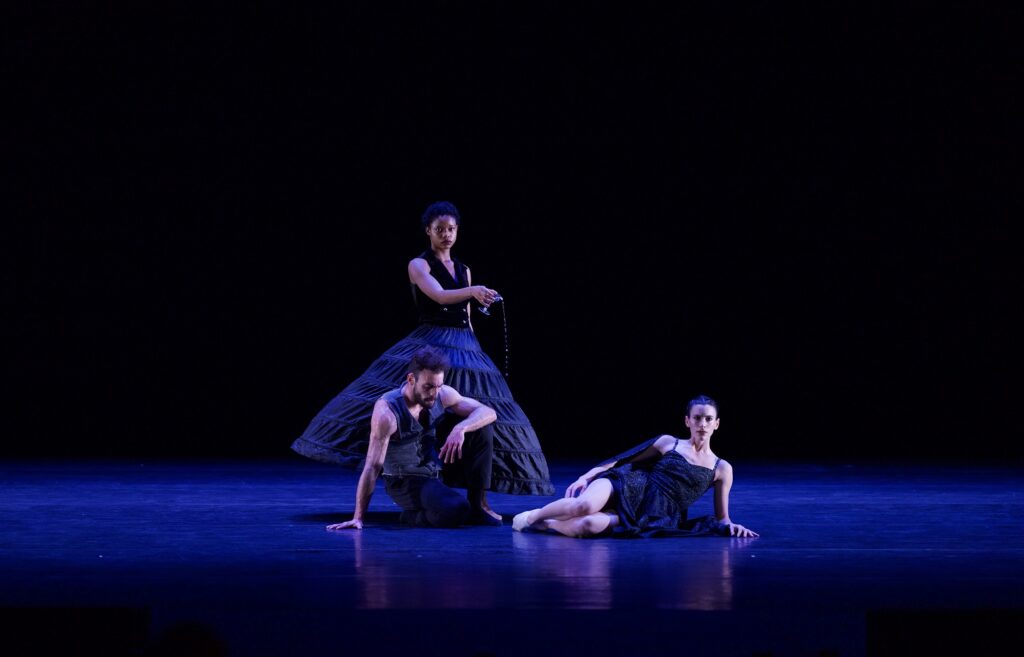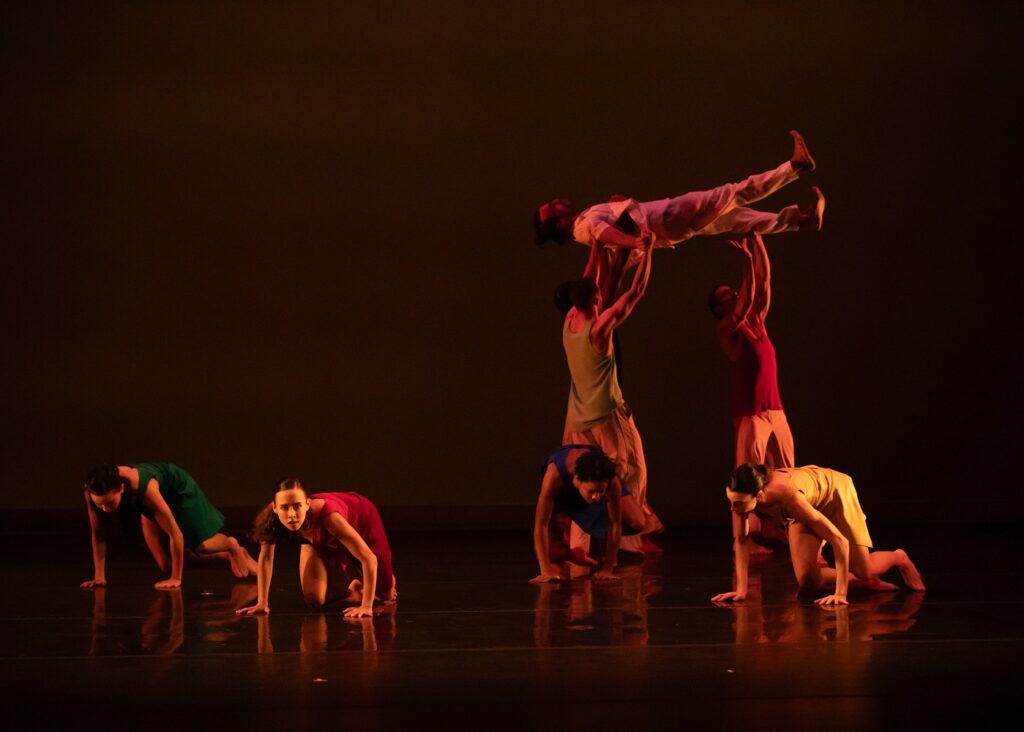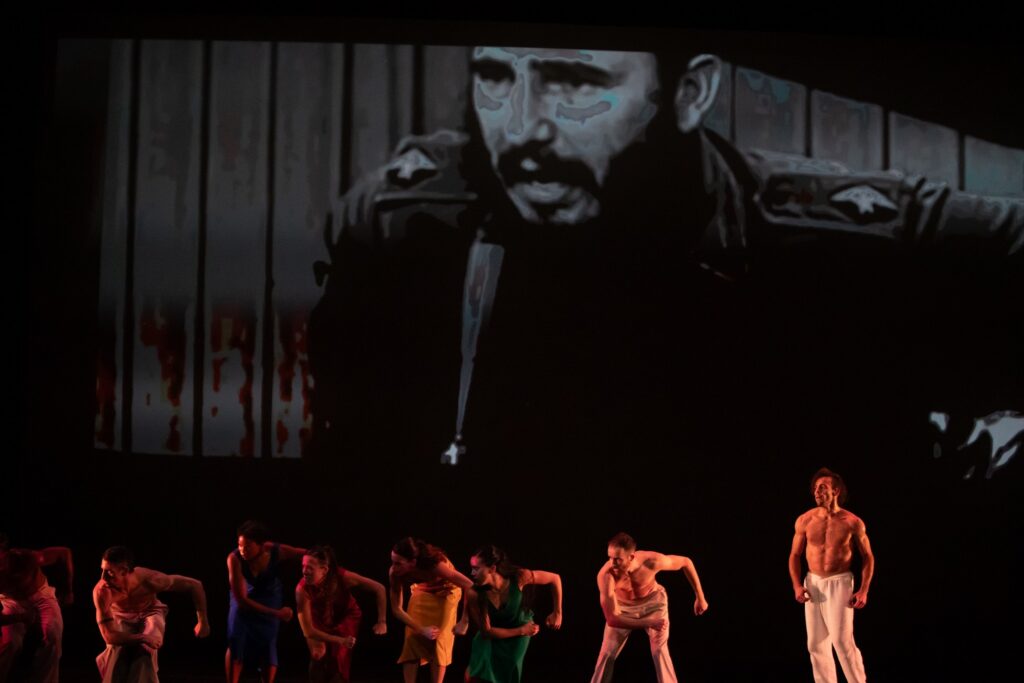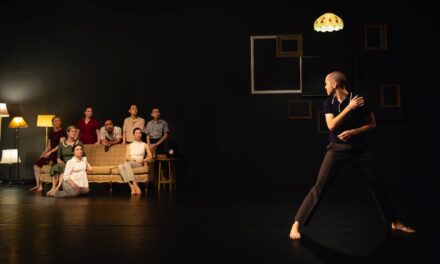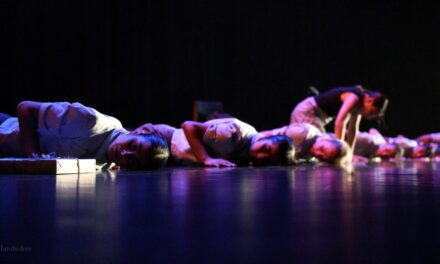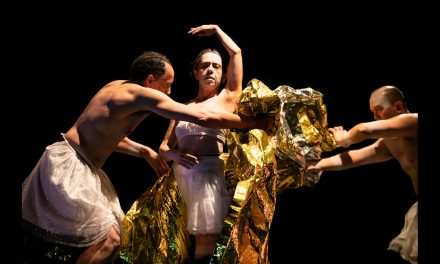Why doesn’t BODYTRAFFIC perform in Los Angeles more? Once that question was posed to Artistic Director, Tina Finkelman Berkett, she began to consider ways to make it happen. One of the answers to the question was to expand BODYTRAFFIC’s Los Angeles season over the course of several months instead of one condensed time frame in one theater. One of the pillars of BODYTRAFFIC’s mission is to inspire and uplift the community through education, outreach and performance. As BODYTRAFFIC was interested in developing more access to their communities here in Los Angeles, they developed four ‘at home’ shows in four different spaces covering a wide swath through various L.A. communities.
The theme of ‘Perpetual Pursuits’ ties the four shows together as they are: In pursuit of Home, Community, Love and Joy. ‘Home’ was an evening in pursuit of the sweetness and strength that come from finding our true home. It was October 6th and 7th at the Wallis Annenberg Center for the Performing Arts. It sold out both nights. I was lucky enough to catch the second show, ‘Community’, an evening in pursuit of community, honoring the power of moving forward, together. It was November 28th at The Skirball Cultural Center. Also a full house. The next show is ‘Love,’ an evening in pursuit of the most significant force driving perseverance and movement. It is February 29th, 2024 at the Audrey Irmas Pavilion at Wilshire Boulevard Temple. The last is ‘Joy,’ an evening in pursuit of laughter and the sublime condition of lightness in a heavy world will be May 16th, 2024 at the Avalon Hollywood. Considering the caliber of what I witnessed from the ‘Community’ show no one will want to miss the next two in the series so mark your calendars well.
“In Pursuit of Community” at The Skirball was comprised of three pieces of which the first was “The One To Stay With” by Choreographers Baye & Asa. “The One to Stay With” was created in response to Patrick Radden Keefe’s “Empire of Pain.” His book chronicles the Sackler family’s rise to power and their central role in the opioid crisis. I would not have thought that this was a theme easily adapted to a concert dance venue, however, it was done extremely well and every nuance of acting and intent was brought to bear by the dancers through the choreography. This was focused, detailed, aggressive, percussive and very specific. The movement syntax of Baye & Asa perfectly described and illuminated the many emotions of all involved in this story of corporate greed and consequently victims of addiction.
It was a tone poem for our times being only one aspect of what corporations do to ensure profit at the expense of the American public. This quote from Baye and Asa’s website says it all: “The physical aggression in our choreography is a symptom of our political rage, and a yearning to personally implicate ourselves. We use our choreography to create political metaphors, interrogate systemic inequities, and contemporize ancient allegories; we build theatrical contexts that celebrate, implicate, and condemn the characters onstage.” And condemn what they did. The many characters portrayed onstage had very specific, intentioned movement qualities that left no doubt as to their part in this complicated scenario. Whether a scientist, or corporate member, victim of the addiction or embodying the actual opiate itself, all was clearly presented and left to the audience to interpret and comprehend. It was a powerful indictment of corporate greed and one of the ways in which Art can blow the whistle on injustices towards human communities that the Government fails to acknowledge. As Lobbyists pay the Government to look the other way or outright ignore these atrocities, it is up to the Artists to point the finger and call them out.
Lighting Design by Michael Jarett was fantastic at outlining the different sections and individual performers and included a water bowl lit from underneath downstage left which gave the entire stage an ominous glow as if it had given birth to the opiates itself and was proliferating them throughout. The costumes by Oana Botez excellently suited the corridors of corporate power and also ironically fitted in to the suffering individual as a cog in a wheel, a mere piece of broken machinery that could be replaced or explained away. They were uniform yet demonstrated the ‘everyman’ character of faceless capitalist progress or government indifference along the lines of Big Brother in ‘1984’. Sound Design by Jack Grabow aided in the alienation of humanity and accompanied the emotional content well.
The performers included: Katie Garcia, Pedro Garcia, Tiare Keeno, Ty Morrison, Joan Rodriguez, Guzmán Rosado, Jordyn Santiago, Whitney Schmanski.
The second piece on the program was “A Million Voices” choreographed by Matthew Neenan. This was set to music by Miss Peggy Lee and showed how “individual identities can shape our relationships with other people and how the people we are around can shape us.” This piece utilized unison movement as a statement of individuality by breaking off and returning in various phrases outlining the groups effect upon any one individual. There was a very funny metaphor of water being introduced as a disruptor. It was physically thrown onto a couple as they were interacting with one another, perfectly portraying the effects of others on a relationship.
“A Million Voices” was a potent study of interpersonal dynamics told through a somewhat whimsical lens. The choreography was precise, controlled, acerbic and exacting; a brilliant take on Human Nature. Music included works by Johnny Mercer & Harold Arlen, Irving Berlin, Stoller & Leiber, and Benny Goodman, among others. The juxtaposition of this period music with contemporary choreography was quite moving in its’ portrayal of human frailty. Here, the costumes by BODYTRAFFIC all in black and white were smartly adapted to the musical period of the songs. The Lighting Design by Burke Wilmore made the black and white costumes pop and set up the pantomime of the piece well. The performers were: Katie Garcia, Pedro Garcia, Alana Jones, Tiare Keeno, Ty Morrison, Joan Rodriguez, Guzmán Rosado, Jordyn Santiago.
Last on the program was World Premiere “Bloquea’o” choreographed by Joan Rodriguez. Berkett had introduced this piece and disclosed that Rodriguez had informed her that “dancing literally saved my life.” This was apparent during the piece as his journey from Cuba to BODYTRAFFIC was well represented. Included were various clips of phone calls and snippets of news footage around the Cuban Missile Crisis which served to shape his world growing up there.
Original music by Pedro Osuna was performed featuring SUUVI on Cello and Ricky Matute on percussion with additional recorded percussion by Luis Conte. They both augmented and amplified the movement through unison themes while other sections had solo instrumentation and delivered the punch that only live music can give. This is an emotional piece outlining the difficult decision to leave one’s country, family and friends in order to achieve a better life, or at least the chance at a better life. Rodriguez imbues his movement with the sheer delight of Habana rhythms while employing it with the pathos of relationships left behind. It is an exquisite testimony to the strength and adaptability of the human condition. Costume Design by Marion Talan de la Rosa matched the music well and these were in contrast with the other costumes on the program. Here long clingy slip-like dresses accentuated the music in a hot Havana nights way. The men were shirtless with baggy pants that moved with the body in a fluid motion. The performers included: Katie Garcia, Pedro Garcia, Alana Jones, Tiare Keeno, Ty Morrison, Joan Rodriguez, Guzmán Rosado, Jordyn Santiago.
Most impressive about this program was the individual performers’ ability to act on top of incredibly precise and focused movement while maintaining their musicality and technical skills. This was Artistry. BODYTRAFFIC is the quintessential Los Angeles Dance Company in that it is a true reflection of the diversity and artistry that has defined Los Angeles. It is for this reason that in the above review I list the company as ‘Performers’ and not ‘Dancers’.
I would like to say a word here about the Performing Arts, especially Dance. Looking up ‘Performative’ on the internet you get this: “ ‘performative’ often sees a quite different sort of use. One of the most striking characteristics is its almost unanimous negative connotation(s), including but not limited to having the quality of being fake, dishonesty, insincerity, and lying”. However, the act of performing can be so much more as described above in the piece “Bloquea’o” which is biographical to Joan Rodriguez. This piece is his story of becoming an artist and moving to Los Angeles from Cuba and all it has cost him. It is real, and it matters. Along these lines I came across an interview which states quite clearly what acting, singing, and dancing in the theater are for.
“Theater as a medium. The initial glamorizer of thought. Through the art of the theater can be told, without too much disguise the secrets, that by its antipathies and sympathies, the secrets and the knowledge of the human heart. And I think that makes the art as important as the Doctor or the Psychologist, even the Minister. I think it is vitally important that the world knows itself. And I think the theater is one of the most immediate means of expression towards that end.” Sir Lawrence Olivier
To learn more about BODYTRAFFIC, please visit their website.
Written by Brian Fretté for LA Dance Chronicle.
Featured image: BodyTraffic – “The One to Stay With” choreography by Baye & Asa – Photo by Chris Kendig.

